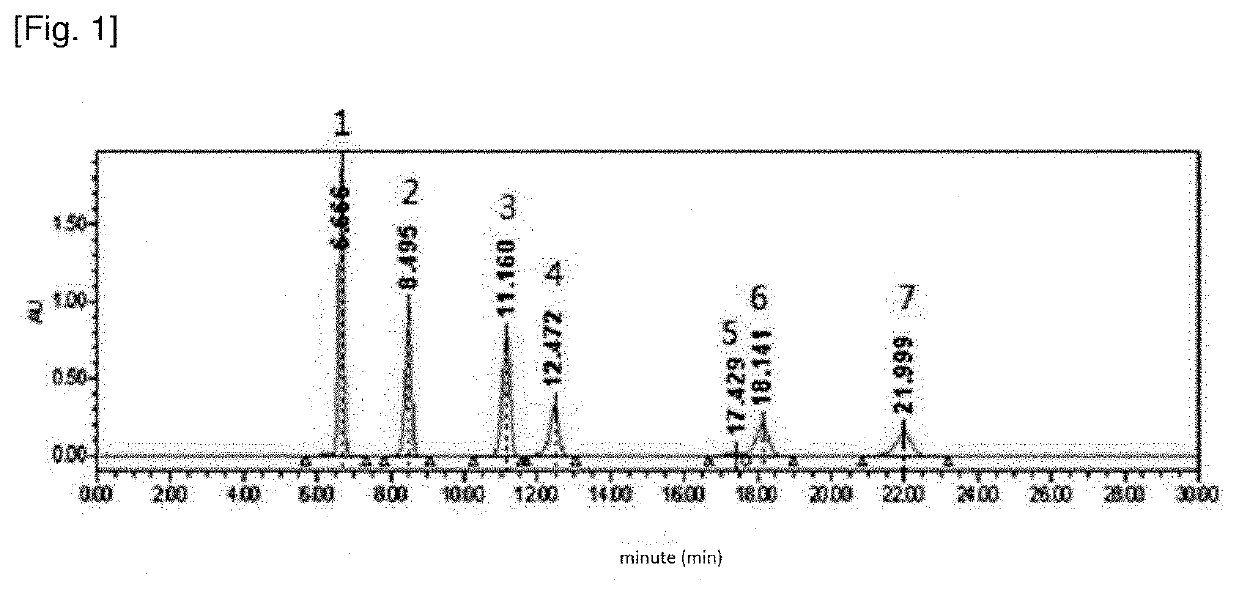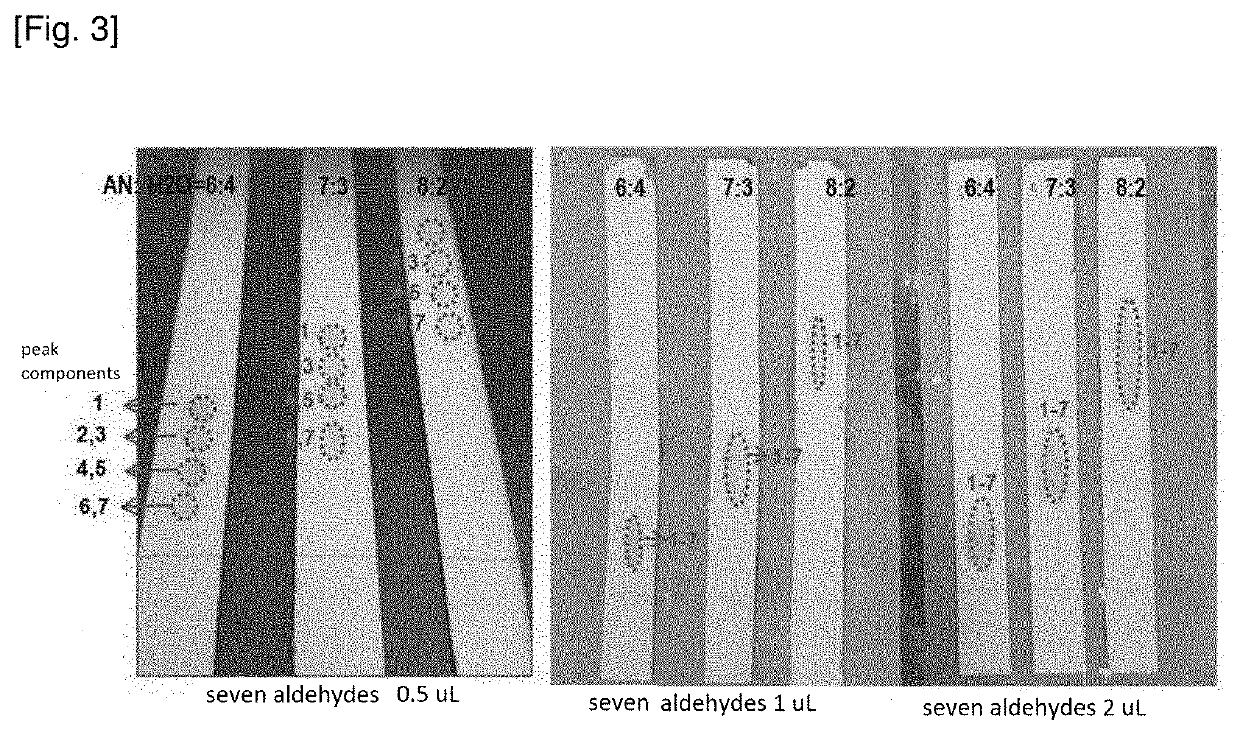Method for Detecting Aldehyde and Ketone By Using Thin Layer Chromatography
a technology ketone, which is applied in the field of thin layer chromatography for detecting aldehyde and/or ketone compounds, can solve the problems of hplc method having no economic advantage, raising concerns about environmental pollution, and requiring precise but unobstructed techniques, etc., and achieves the effect of shortening the tim
- Summary
- Abstract
- Description
- Claims
- Application Information
AI Technical Summary
Benefits of technology
Problems solved by technology
Method used
Image
Examples
example 1
[0061]In this example, the results of TLC analysis with the sample injection amount of 0.5 μL are described.
[0062](1) A carbonyl-containing air sample was passed through a 2,4-DNPH containing cartridge for 5 minutes at a flow rate of 1.5 L / min to obtain a 2,4-dinitrophenylhydrazone derivative.
[0063](2) The colored 2,4-dinitrophenylhydrazone derivative from (1) was extracted with acetonitrile (AN) for 1 minute so that the total volume of the extract was 5 mL.
[0064](3) The extract from (2) was placed on a RP-18 F254s TLC plate (silica gel coating, aluminum support) (C18 coating thickness 0.2 mm, plate size 10 cm×1 cm) and developed with a mixed solution of AN:H2O=6:4, 7:3 and 8:2, respectively. The TLC separation results are shown in FIG. 3 (see “seven aldehydes 0.5 μL” on the left in FIG. 3).
[0065]As can be seen in FIG. 3, seven 2,4-dinitrophenylhydrazone derivatives of aldehyde and ketone are separated into four spot (indicated by the “peak components” on the left in FIG. 3) and det...
example 2
[0072]This example presents the TLC analysis results using a mixed solvent of ethyl acetate (EA):hexane (Hex)=1:10 as the TLC developing solvent while fixing the sample injection amount at 0.5 μL.
[0073]The same procedure as in Example 1 was carried out except that a mixed solvent of ethyl acetate (EA):hexane (Hex)=1:10 was used in place of a mixed solution of AN:H2O=6:4, 7:3 and 8:2 in Example 1 (3). The TLC separation results are shown in FIG. 4 (see “1:10” on the right in FIG. 4).
[0074]As can be seen in FIG. 4, seven 2,4-dinitrophenylhydrazone derivatives of aldehyde and of ketone were separated into their respective components (indicated by “peak components 1-7” on the right in FIG. 4; 7→6→5→4→3→2→1). The concentrations of the isolated derivatives are shown in Table 2 below:
TABLE 2Conc.Peak #Sample(μg / mL)1Acetaldehyde-2,4-dinitrophenylhydrazone10002Acetone-2,4-dinitrophenylhydrazone5003Acrolein-2,4-dinitrophenylhydrazone5004Benzaldehyde-2,4-dinitrophenylhydrazone5005Butyraldehyde...
PUM
 Login to View More
Login to View More Abstract
Description
Claims
Application Information
 Login to View More
Login to View More - R&D
- Intellectual Property
- Life Sciences
- Materials
- Tech Scout
- Unparalleled Data Quality
- Higher Quality Content
- 60% Fewer Hallucinations
Browse by: Latest US Patents, China's latest patents, Technical Efficacy Thesaurus, Application Domain, Technology Topic, Popular Technical Reports.
© 2025 PatSnap. All rights reserved.Legal|Privacy policy|Modern Slavery Act Transparency Statement|Sitemap|About US| Contact US: help@patsnap.com



